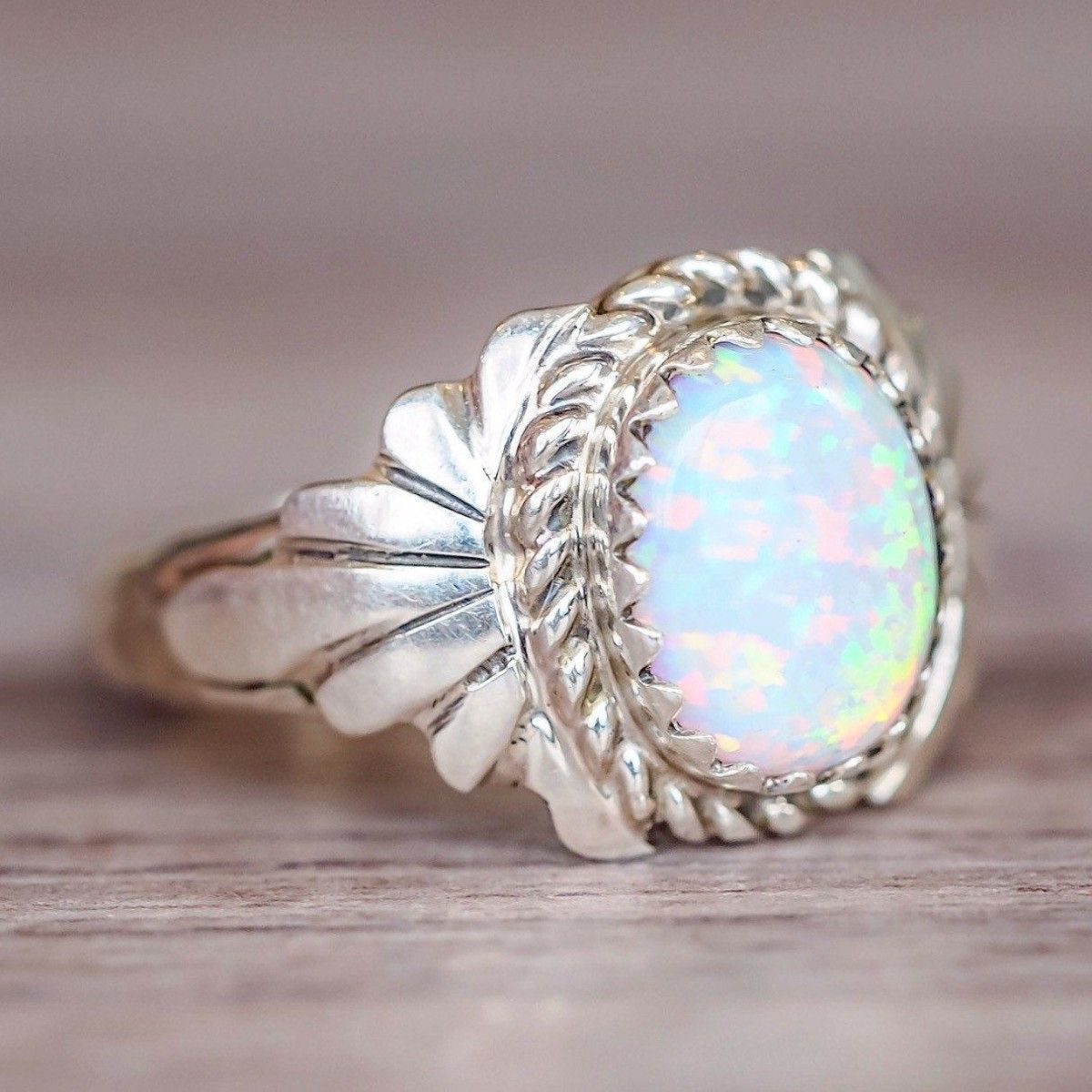Opal’s kaleidoscopic hues have delighted us for centuries! Loved for its spellbinding play-of-color, this October birthstone seems to be a bit magical and mysterious. Get ready to find out where it comes from – and how it forms!
History of the beloved Opal
Bedouins thought opal contained lightning and fell from the sky during thunderstorms. The truth is more down to earth: the October birthstone is found in Australia, Ethiopia, Mexico, Brazil and other locales. Typically, it was created when seasonal rains drenched dry ground. The showers soaked deep into ancient underground rock, carrying dissolved silica (a compound of silicon and oxygen) downward. As the water evaporated over time, it left solid deposits of silica in cracks and between layers of the underground rock. These silica deposits became opal. When light passes through the tiny silica spheres that form opal, it breaks up (diffracts) and produces the familiar kaleidoscopic play-of-color.
Different kinds of Opal
Gemologists love opal because its flashing play-of-color is caused by diffraction of light by the silica spheres, which are stacked like tiny Ping-Pong balls in a box. They also love the endless variety of patterns and colors in opal: No two opals are exactly alike.
Pattern is the arrangement of an opal’s play-of-color. The industry categorizes opal’s play-of-color patterns into three types:
Pinfire – Very small patches or “dots” of color Flash – Large areas of color Harlequin – Large, distinct, usually rectangular patches of color with edges touching each other. The harlequin pattern is extremely rare and considered by many to be the most valuable.
Why the Opal remains so mysterious
How opal forms is still something of a mystery. No single scientific model has been able to account for the many different opal deposits around the world and different opal types.
One model, the weathering model, is the most well known and easily understood. In this model, opal forms in desert areas that have strong seasonal rainfall and rocks rich in silica (a compound of silicon and oxygen), such as volcanic ash and some sedimentary rocks. During winter, heavy rains raise the water table. As rainwater trickles down through the rocks, it carries the silica with it. The silica-rich solution fills fractures and cavities in rocks below the water table. In summer, the desert sun dries the landscape and the water table retreats downward. As the water evaporates, it leaves spheres of silica in place. This process is repeated year after year – for millions of years – until the layers of silica spheres form opal.
